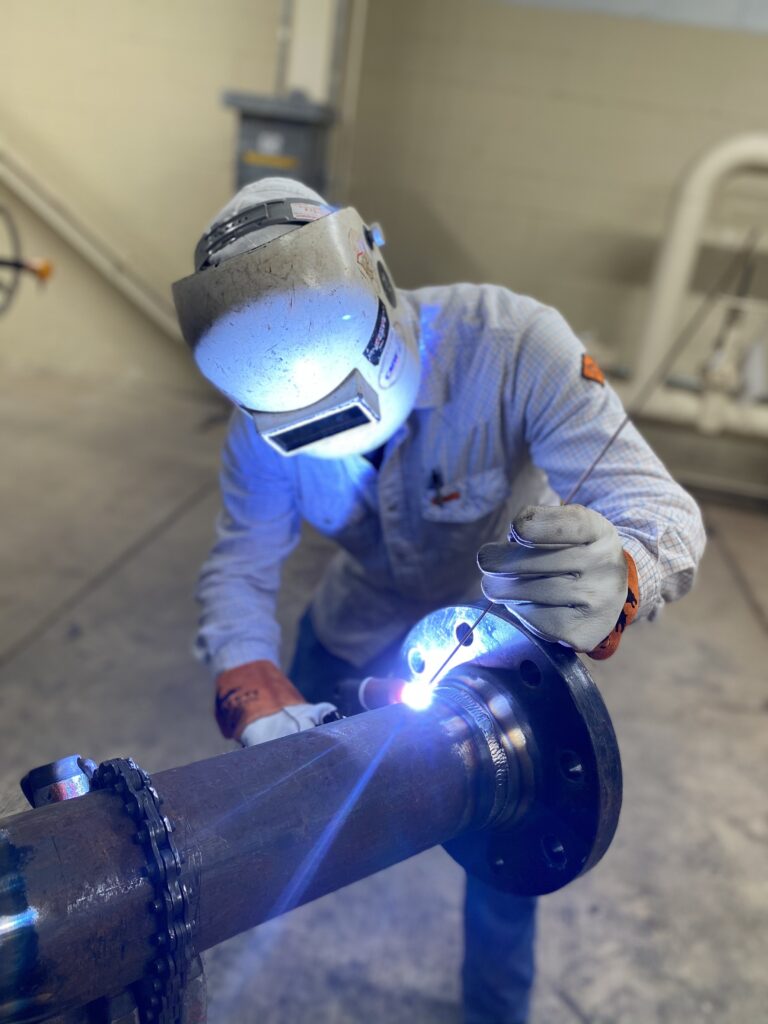Welding Courses
What is stick welding?
Stick welding or (SMAW), which stands for stick metal arc welding is a type of arc welding that uses a filler rod as the electrode that is coated with flux. As the rod burns the flux burns with it and protects the weld from impurities to keep the metal clean and solid. The flux can and should be chipped off after it cools and hardens. This type of welding is most commonly welded with straight polarity meaning the electrode lead is positive and the ground lead is negative. This is also know as DCEP meaning (direct current electrode positive).


What is tig welding?
Tig welding stands for (tungsten inert gas). This is also known as GTAW which stands for gas tungsten arc welding. This is an arc welding process that uses tungsten as the electrode.
Tungsten is a brittle metal which has a high melting point so it doesn’t melt as you are welding. The tungsten is held in a tig torch which is held in one hand and you feed the filler metal into the weld with your other hand.
This process uses an inert gas to protect the weld. Argon is the most common gas used with tig welding. The gas comes in a high pressure bottle which is usually compressed to about 2400psi. A flow meter is connected to the bottle to control the flow of the argon so that it can be used.
What is mig welding
Mig welding is another type of arc welding but this process feeds the filler wire for you. The wire is on a spool and is fed through a gun that you hold in your hand. The gun is equipped with a trigger that acts as a on/off switch. When you pull the trigger the machine feeds the wire to weld and when you disengage the trigger it stop the feed. The trigger also turns the gas flow on and off.
There are a few different inert gases that you can use depending on what type of metal and wire you are welding with. The most common type of gas used with mig welding is 75% argon/25% CO2. The gas surrounds the molten metal as you are welding and protects the weld from impurities. If there is no gas then the weld will get contaminated and filled with porosity and result in a poor weld.

